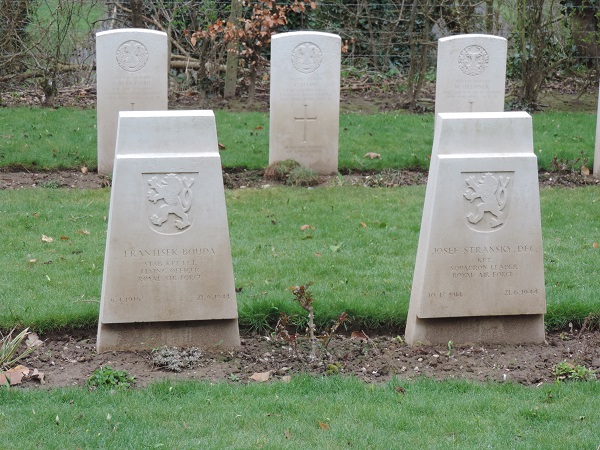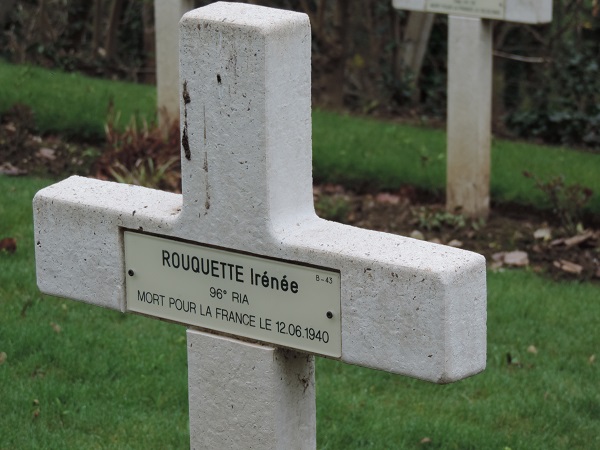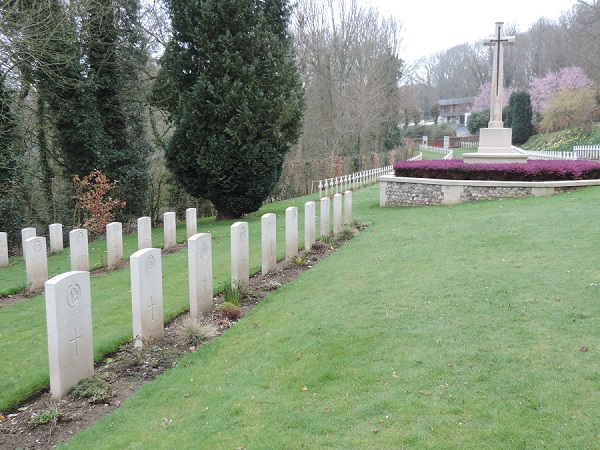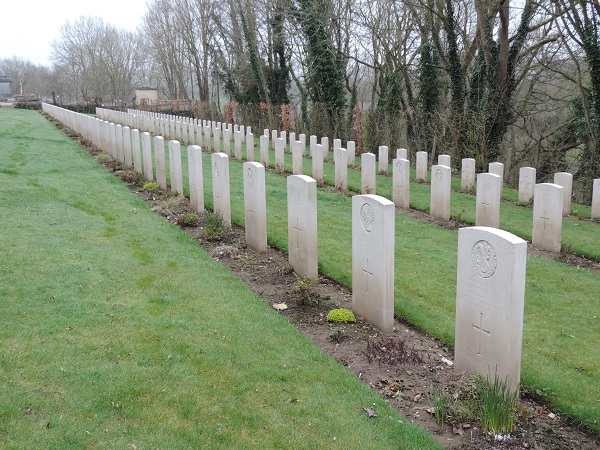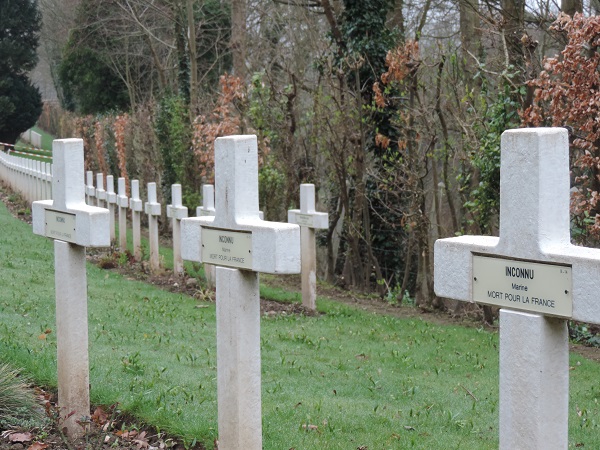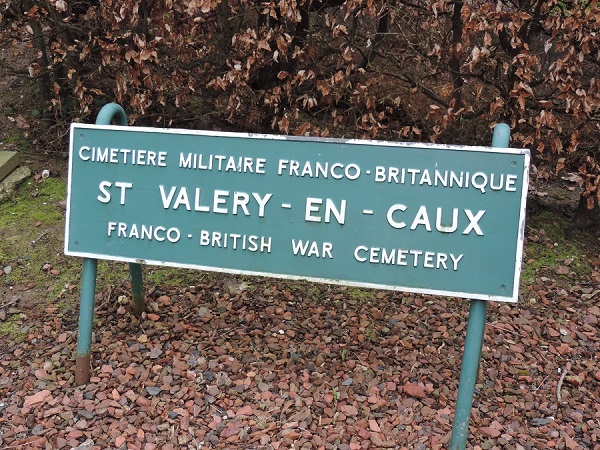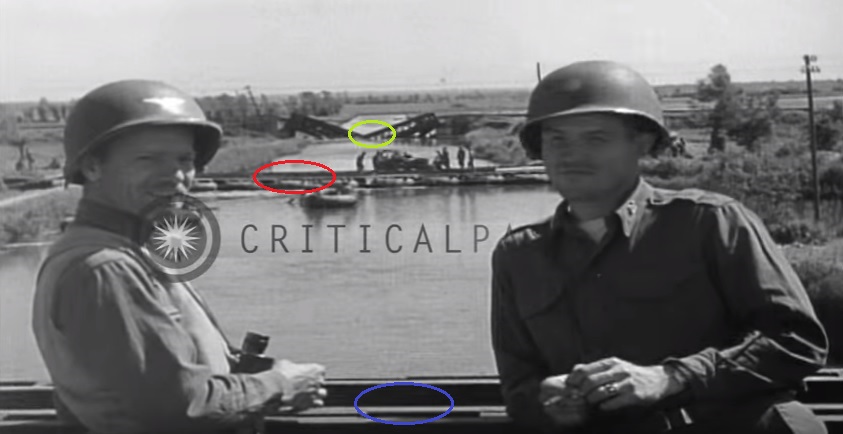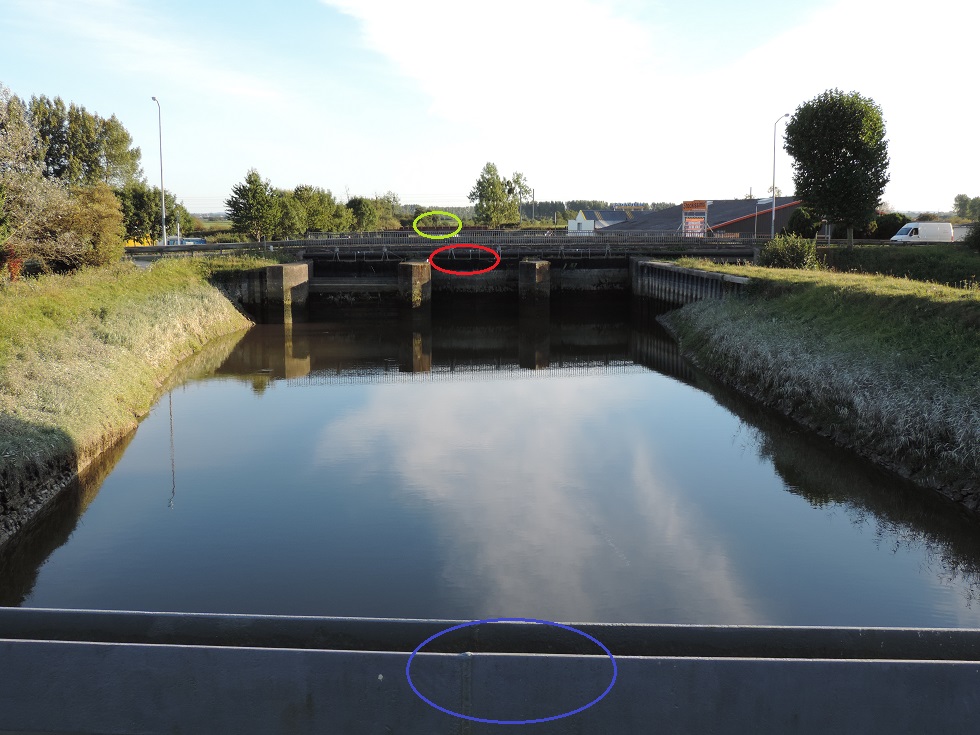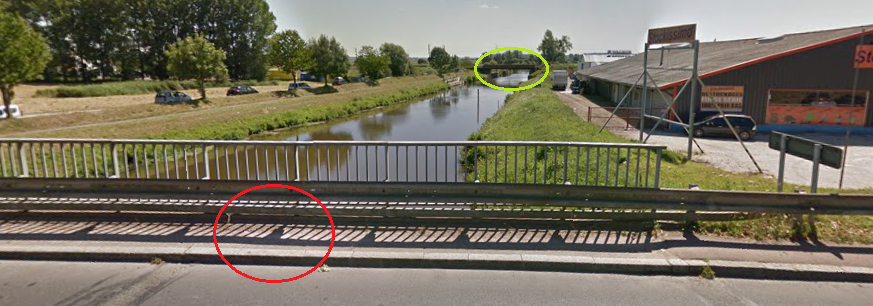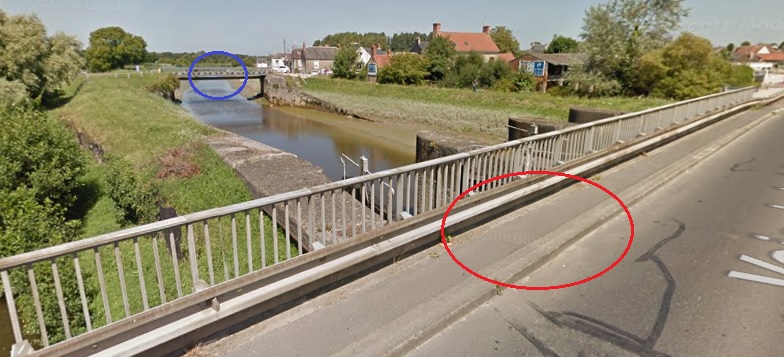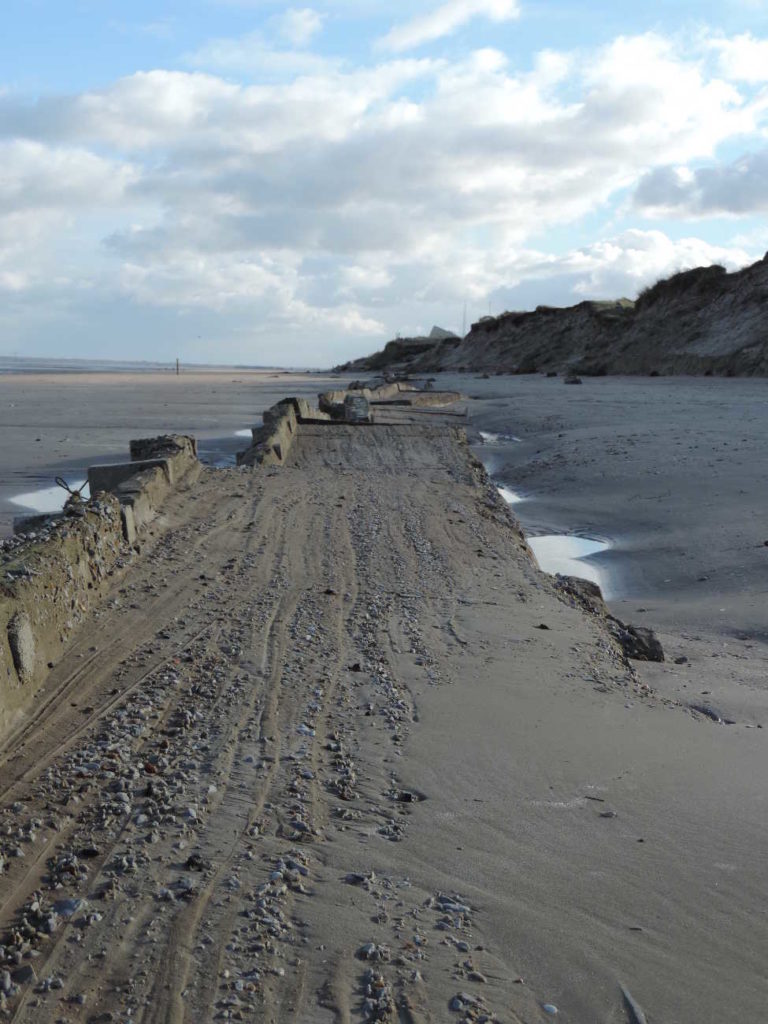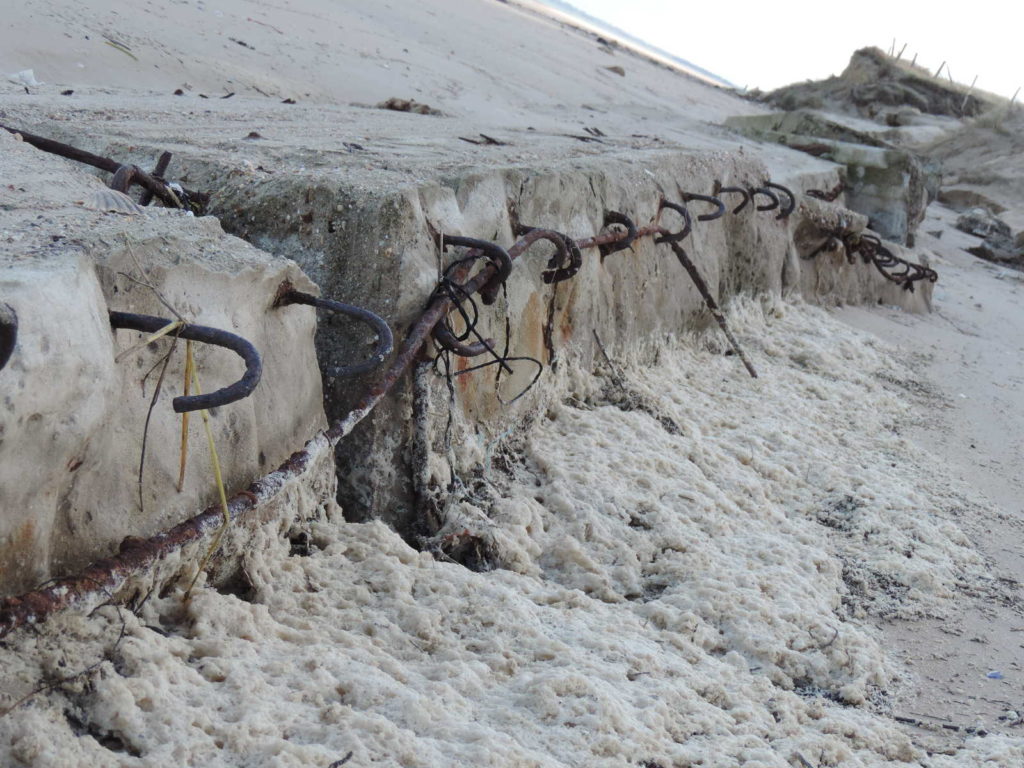by Bertrand Froger | 15 Mar 2017 | Places, To be visited
A military cemetery in a peaceful valley
Located between the towns of Fécamp and Dieppe (76), the village of Saint Valéry en Caux shelters on its lands a magnificent little military cemetery attached to the civil cemetery of the commune. However, there are 218 young French sailors and soldiers, 206 young British soldiers and 28 British, Polish, New Zealand and even a South African pilots, resting on the slope of a peaceful and verdant hillside. Built and maintained by the Commonwealth War Graves Commission, this cemetery does not attract crowds but heroes are buried there.
1940’s Heroes in Normandy
Unlike big military cemeteries of the Calvados coasts (14), most of the men who rest at the Franco-British cemetery in Saint Valéry en Caux did not fall during the Battle of Normandy. Indeed, although there is a tendency to believe that the campaign of 1940 was soon completed in eastern and northern France, it is worth recalling that on various pockets, in particular along the seas, the fighting continued to rally Great Britain and not fall into the hands of the enemy. These young men did not die as heroes in 44, but 4 years before. Let us not forget them.
TEST IMAGE FANCY BOX

by Bertrand Froger | 3 Mar 2017 | Historical events, Places, To be visited
CARENTAN, 1944
Objective : Cross the Taute River
Although a first Bailey bridge is installed by the soldiers of the 300th Combat Engineer Battalion, still visible today along the harbour channel near the lock, the crossing of the Taute River by the US Army has to allow a free and fluid traffic of the allied traffic from the first weeks of invasion. However, all the infrastructures allow to cross it were destroyed during hard battles for the Liberation of the city of Carentan (50) (101st airborne division), junction point of Utah Beach with the other allied landing beaches.
Understand the junction between Carentan and Saint-Hilaire-Petitville
So, new installations are built in various points between the municipalities of Saint-Hilaire-Petitville and Carentan (50). In blue, the bridge which will go into History as “Tucker Bridge”, further to the death of commander of the 300th, who will be temporarily a double Bailey bridge until the original stony bridge is done up. In red, to improve the road flow and by-pass the bridge Tucker, a pontoon bridge is fitted out and so, vehicles progress on inflatable boats. This bridge is strengthened today, it lines the store called ” Stockissimo ” and is endowed with a door with stream since the 50s. In green, the railroad is also broken, the men of Tucker then have to rebuild a work together with the men of the 729th Railway Operating Battalion to allow the trains to cross the river again.
by Bertrand Froger | 24 Jan 2017 | Discoveries, Places, To be visited
A concrete anti-tank wall knocked down on the beach
Following the last strong winds that struck Normandy, the overturned portion of the anti-tank wall located at Utah Beach between the Landing Museum and the red-roofed chalet is once again appreciable in its entirety. Indeed, this element being covered with sand most of the days of the year, it is difficult to attend this show regularly and it’s also more rare for tourists who come only for some days a year. This is an excellent excuse to go for a walk in the next few days.
A part of the greatest Atlantic Wall
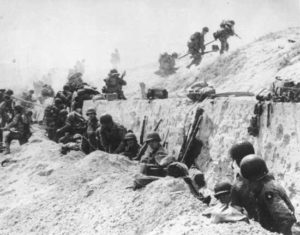 It was installed by German soldiers, civilians and members of the Todt Organization, a civil and military engineering group engaged in the construction of the buildings on the Atlantic Wall. This Atlantic wall was used to push a possible allied landing into the sea and this 1,50-meter high wall was an additional element of defense. Between the different support points (WN and Stp) of the site including blockhouses or even networks of mines and barbed wire, it aims to prevent the crossing of the dune by tanks or vehicles. Thus, a new task will be added to the men of the allied engineering corps during the Overlord mission, that of breaking down these concrete walls and allowing the crossing of the dunes.
It was installed by German soldiers, civilians and members of the Todt Organization, a civil and military engineering group engaged in the construction of the buildings on the Atlantic Wall. This Atlantic wall was used to push a possible allied landing into the sea and this 1,50-meter high wall was an additional element of defense. Between the different support points (WN and Stp) of the site including blockhouses or even networks of mines and barbed wire, it aims to prevent the crossing of the dune by tanks or vehicles. Thus, a new task will be added to the men of the allied engineering corps during the Overlord mission, that of breaking down these concrete walls and allowing the crossing of the dunes.



